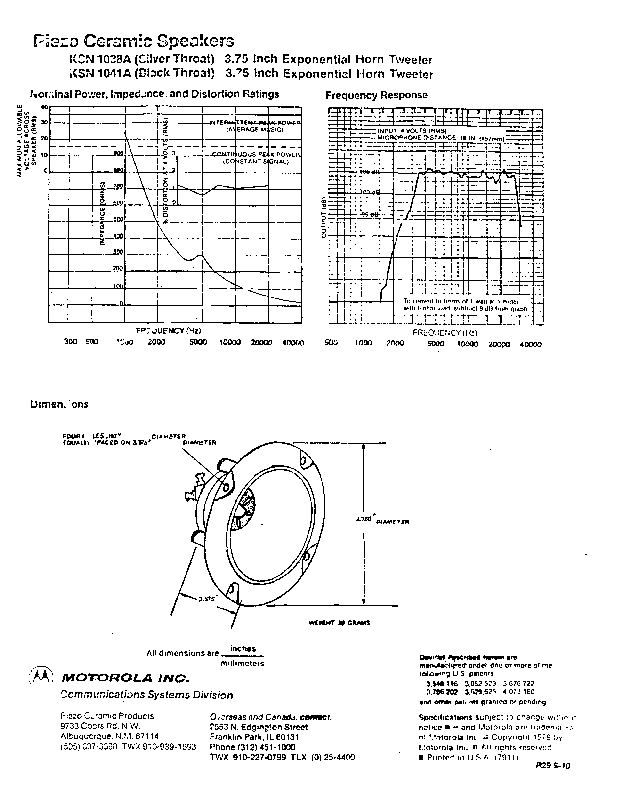Some describe modifications they've made to piezo's, but I've always found the KSN-1038's to sound excellent, just the way they are. I don't recommend doing anything to them, other than perhaps taking them apart and cleaning them.Make sure there's no debris inside them. It's easy for sawdust to fall down inside them, past the phase plug, and it is then trapped against the cone. If you drill mounting holes using the tweeter as your guide, it's particularly easy for sawdust to fall inside. And even if you've been very careful, dust and debris could fall inside while the part sits on the distibutor's shelf. So that's the one thing I can suggest be done to these units at assembly time - Take 'em apart and gently blow free any debris that may have collected on the cone or back plate.
Here's the specifications of the KSN-1038, "right out of the box" -
 CTS (Formerly Motorola) KSN-1038
CTS (Formerly Motorola) KSN-1038
The performance data shown above is what you can expect from an unmodified unit, and as you can see, it is clean and flat, and distortion is very low. If you insert damping material, modify the assembly or apply a film of some sort, you'll have a very hard time doing your modifications consistently.
I know that some recommend techniques such as these, but I don't agree with them. I find no fault in the little piezo's - not the 1038's anyway - There's just no fault so glaring that I would want to change them. The performance data shown above is quite good, and I think they sound as good as the numbers indicate. They don't generate more than about 115dB/M and they can't be used below 3.5kHz. But within these constraints, they're really excellent parts and I wouldn't want to change them.







